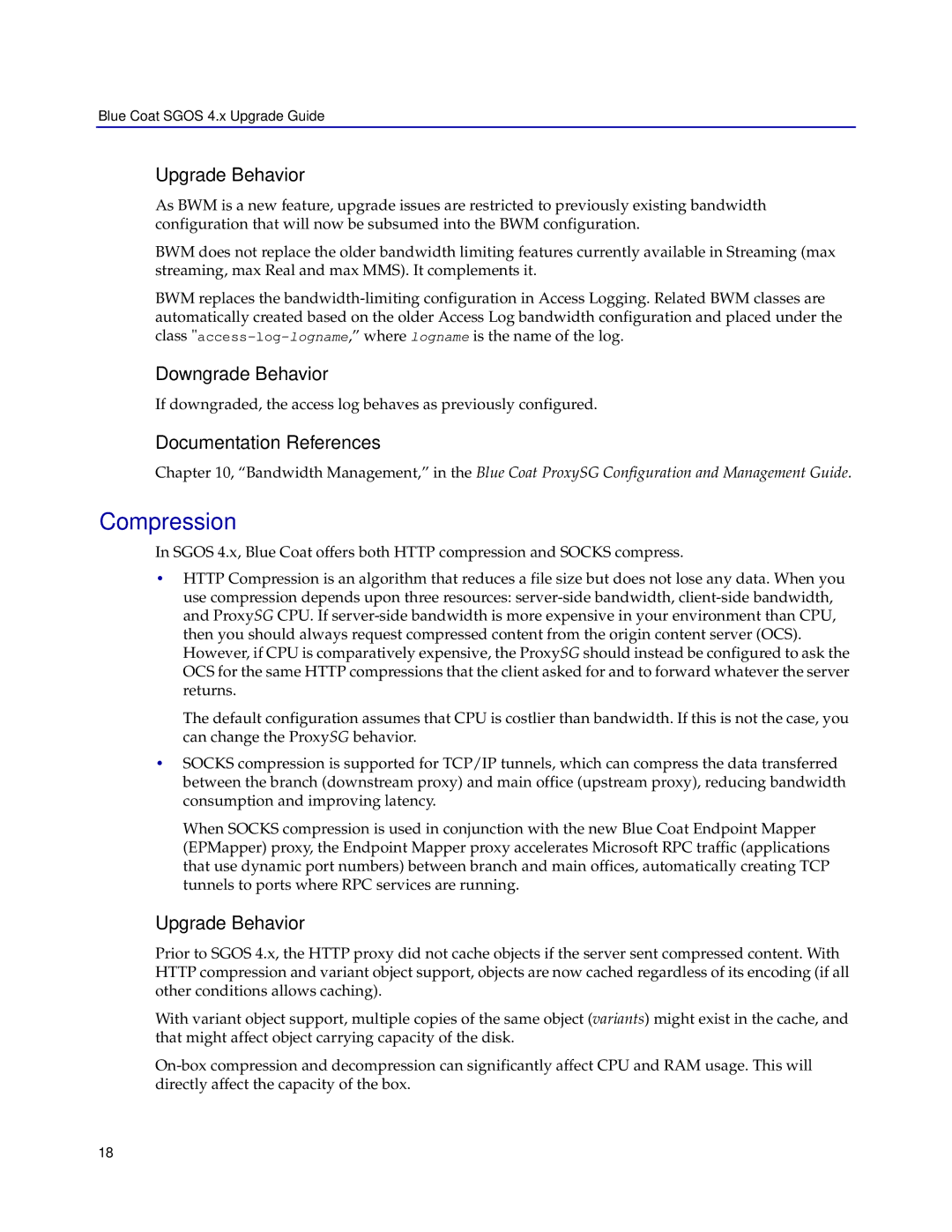SGOS 4.x specifications
Blue Coat Systems SGOS 4.x is a robust operating system designed for the Blue Coat ProxySG series of appliances, which serve as content filtering and web security solutions. The SGOS (Secure Gateway Operating System) is crafted to enhance network performance while providing extensive security and policy enforcement capabilities. This article delves into the numerous features, technologies, and characteristics that define SGOS 4.x, making it an essential tool for organizations looking to fortify their web traffic management and security.One of the standout features of SGOS 4.x is its advanced web filtering capabilities. The system employs a comprehensive URL categorization database that allows organizations to enforce content policies effectively. By categorizing millions of web pages, SGOS enables users to block or allow access to specific sites based on their content category, ensuring a safe browsing experience for employees and preventing access to harmful or non-work-related content.
Another notable technological characteristic of SGOS 4.x is its accelerated SSL decryption. As encrypted traffic continues to dominate the web, it becomes increasingly important for organizations to inspect this traffic for potential threats. SGOS 4.x offers robust SSL decryption capabilities that allow organizations to analyze encrypted traffic while maintaining the confidentiality and integrity of the data being transmitted. This attribute not only strengthens security but also aids in compliance with regulatory requirements.
SGOS 4.x is also equipped with exceptional caching and content delivery features. By caching frequently accessed content, the system reduces load times and optimizes bandwidth usage. This caching mechanism is enhanced by predefined policies that dictate how content is stored and retrieved, significantly improving user experience while reducing operational costs.
Furthermore, SGOS 4.x supports advanced reporting and analytics features. The integrated reporting tools provide administrators with insights into web usage patterns, bandwidth consumption, and security incidents. These insights facilitate informed decision-making and allow organizations to refine their web usage policies based on actual user behavior and threat landscape analysis.
In terms of scalability, SGOS 4.x is engineered to support a wide range of deployment scenarios, from small businesses to large enterprises. The architecture is designed to efficiently handle varying volumes of traffic without compromising performance or security, making it a flexible solution for diverse organizational needs.
Overall, Blue Coat Systems SGOS 4.x presents a powerful platform for web security and traffic management. With its advanced filtering, SSL decryption, caching, and analytics capabilities, SGOS 4.x remains a vital solution for organizations aiming to enhance their security posture and improve operational efficiency in an increasingly complex web environment.
